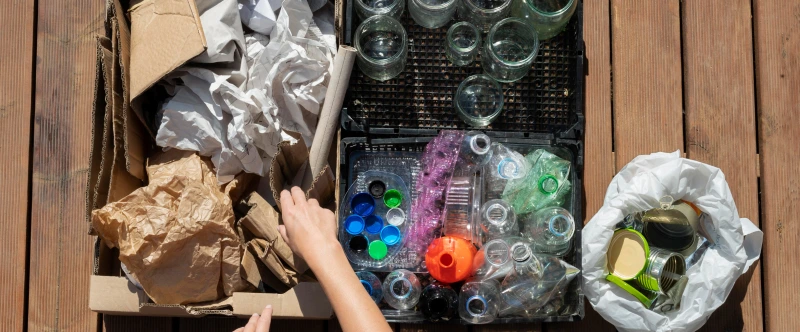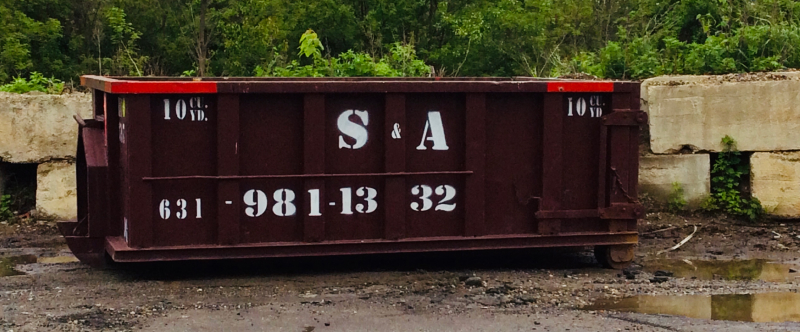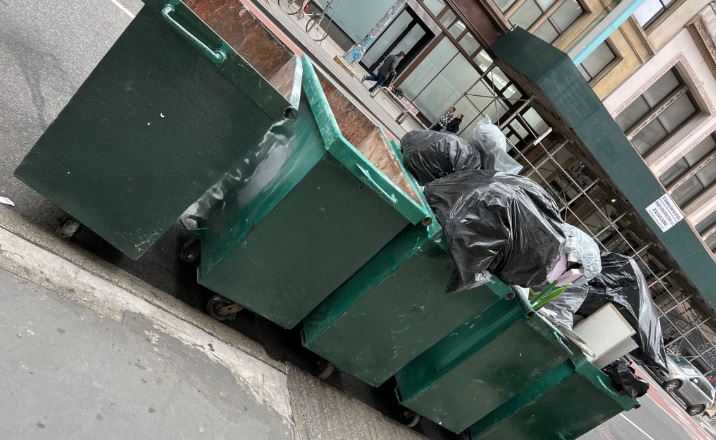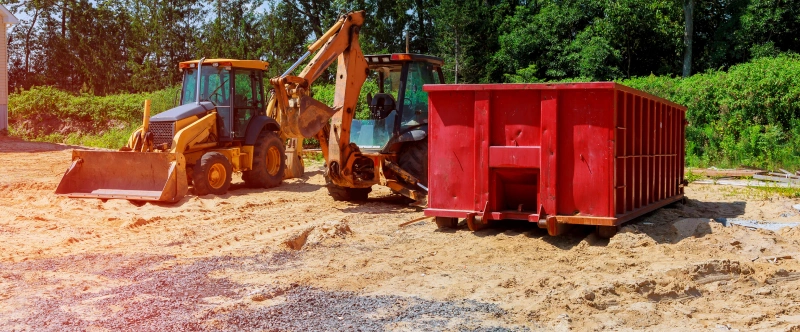In the modern world of convenience and consumption, each individual plays a significant role in waste generation. The ever-increasing average trash production per person has become a pressing concern in today’s society. From household waste to packaging materials to disposable products, our habits and consumption patterns contribute a lot to the waste generated. Waste Generation and Disposal are among the hot topics today due to increasing environmental problems.
Have you ever thought about how much waste a person generates on an average day? Perhaps you believe you live a close-to-zero-waste lifestyle by actively avoiding specific plastic products such as water bottles, plastic bags, glasses, etc. However, there is still a lot, from domestic waste to waste generated during home renovations, the list is unending.
Factors like economic development, urbanization, cultural practices, and local policies are among the reasons for increasing waste generation. In this blog, we will go in depth on how much waste a person generates as well as daily waste generation statistics, facts and the environmental impact of personal waste.
How Much Waste Does the Average Person Generate?
The Environmental Protection Agency (EPA) has gathered international waste data for 30 years. As per its research, on a worldwide scale, humans produce around 2.6 trillion pounds of trash per year. Its reports claim that the average trash production per person is 1.5 tons of solid waste per year, and the average waste per person per day ranges between 0.11 to 4.54 kilograms. The high-income countries are responsible for 34% of the world’s waste, roughly 583 million tons. Talking about the US, with only 4% of the world’s population, it is responsible for almost 12% of trash produced every year.
The average waste per person per day in America is 4.9 pounds, which means about 34 pounds per week and approximately 1,800 pounds per year. In a nutshell, Americans generate over 700,000 pounds of waste per day, which may fill 60,000 garbage trucks. Annually, per person generates 1,642 pounds, while a family generates 6,570 pounds. That’s huge, right? Also, around 62% of waste is dumped into landfills, which is a major environmental concern. By 2050, global waste production is anticipated to reach 3.40 billion tons, growing at a rate more than twice that of the world’s population.
Daily Waste Generation Statistics
- In high-income nations, the daily per capita waste production per person is expected to rise by 19 percent by 2050. In contrast, low- and middle-income countries are projected to see an increase of around 40 percent or more in per capita daily waste generation.
- On average, each person generates about 0.74 kilograms of waste every day. However, this amount varies greatly depending on the region, ranging from as little as 0.11 kilograms to as much as 4.54 kilograms per person per day.
- North America leads in per capita waste production, followed by Europe and Asia. On average, a person in North America produces 4.40 pounds of waste daily.
- At least 33% of worldwide waste is not managed in an environmentally responsible manner, including open dumping and burning.
Average Household Waste Production in the United States
On average, a US household generates about 17.4 pounds of trash output by individuals per day, which amounts to approximately 6,350 pounds of waste per household per year. This trash output by individuals includes:
- Organic Waste: This contains food scraps, yard trimmings, eggshells, and other biodegradable materials. According to some stats, the organic waste produced by households include:
- 48 pounds of books
- 20 pounds of wood waste
- 100 pounds of food scraps
- 90 pounds of tossed-out clothes and shoes
- Recyclable Materials: Paper, cardboard, plastics, glass, and metals. This includes:
- 25 pounds of office papers
- 22 pounds of paper plates or cups
- 38 pounds of newspapers
- 77 pounds of plastic bottles and jars
- Non-Recyclable Waste: Items such as certain plastics, textiles, broken household items, and non-recyclable packaging. For example:
- 20 pounds of soiled or contaminated paper products
- 15 pounds of broken glasses
- Hazardous Waste: Batteries, electronics, paints, medical waste, cleaning products, and other materials that require special disposal methods. For example:
- 5 pounds of batteries
- 10 pounds of paint cans
- 30 pounds of electronic waste
Individual Waste Disposal Habits that you must Follow
There are different methods of disposal, and individual waste disposal habits play a significant role in the overall effectiveness of waste management systems. By disposing of waste in an environmentally responsible manner, people can lessen the adverse effects of waste on the environment. Here are some common Individual waste disposal habits:
Limit Plastic Use
Each year, around 350 million tons of plastic waste is produced, and only 9% is successfully recycled. The majority of plastic garbage winds up in landfills or the ocean, which harms aquatic ecosystems. Therefore, as a responsible individual, the first step towards waste reduction is limiting the use of plastic. You can use your own steel glasses, cloth bags, water bottles, etc., instead of plastic bottles, straws, bags, etc.
Segregate the waste
Segregation is one of the best ways to reduce waste significantly, and many countries have already reduced waste using this strategy. Segregate the waste into recyclable (plastic, paper, glass, etc.), organic (food scraps, yard waste), and non recyclable (domestic waste and general trash). Waste segregation makes recycling considerably easier and thereby reduces waste built up in landfills.
Reduce the Use of Paper
Paper accounts for around 26% of waste in landfills; therefore, it’s essential to reduce the use of paper and paper products at home, offices, and in companies. Digitalization has already reduced our dependency on paper with digital e-books, emails, social media, document sharing, etc. Besides that, you can prefer handkerchiefs over tissue paper to wipe your face, jute plates over paper plates for food, etc. Making such small changes can greatly reduce the trash output by individuals.
Say Yes to Composting
Wet waste can be turned into fertilizers for plants, and this is what composting is. It is believed that if people adopt composting of solid waste, waste generation can be reduced by 30%. Put kitchen waste like leftover fruits, vegetables, vegetable peels, and yard waste into a separate bin and leave it for compost. Use the compost as fertilizer in your garden to add nutrients to the soil.
Recycle and create something new
Recycling is the best way to reduce waste at landfills and contribute to environmental conservation. Many items, such as paper, glass, cardboard, metal, plastic, electronics, wood, etc., are recyclable and can be used for other purposes. The best way to do this is to put recyclable waste into a separate bin and send it to the recycling center with the help of a dumpster rental company.
Reduce Food Wastage
In the United States, 92 billion pounds of food is wasted each year, accounting for 38% of all food produced in America. People throw away excess food when they don’t plan their meals in advance or in the right way. The best way to cope with this is planning your meals in advance. With this, you know what you want and how much you need to consume at a particular point in time. This saves you money as well as reducing food wastage.
Waste Generation Facts Unwrapped
- According to the World Bank, worldwide garbage generation is increasing, with predictions indicating that by 2050, the world might be creating more than 3.4 billion tons of waste per year, nearly doubling the amount created in 2016.
- Only around 9 percent of the 300 million tons of plastic produced annually get recycled.
- It is estimated that around 50 million tons of electronic trash are generated worldwide each year, creating environmental and health problems owing to inappropriate disposal methods.
- In the United States, construction and demolition waste accounts for around 40% of total solid waste creation.
- Over 50 million tons of e-waste are created annually, the majority of which is shipped to and discarded in poor Asian and African countries.
- Over 2,000 landfills are currently operational in the United States alone, and some regions have space constraints for garbage disposal.
- The environmental impact of personal waste is that millions of tons of plastic waste enter the oceans each year, posing a severe threat to marine life.
Environmental Impact of Personal Waste
- Chemicals contaminating soil: Most waste ends up in landfills, leading to soil pollution. Furthermore, its decomposition produces methane, a potent greenhouse gas that can harm both plants and humans.
- Disturb Marine Life: Single-use plastics, such as bottles, bags, and packaging, contribute to plastic pollution in the ocean and waterways. Marine life is harmed and often even killed when marine animals swallow or entangle themselves in plastic waste.
- Ecosystem Damage: Improper waste disposal, such as dumping chemicals down drains or into nature, can degrade ecosystems, reducing biodiversity and ecosystem services.
- Greenhouse Gas Emissions: Waste generation, transportation, and improper disposal emit greenhouse gases, which contribute to climate change. For example, waste decomposition releases methane and carbon dioxide, which are harmful greenhouse gases.
Why should you choose S&A container Service for Waste Disposal?
S&A Container Service is one of Long Island’s most reputable and trustworthy dumpster rental provider companies with 5-star ratings. Since 1953, we have been providing well-maintained, reliable, and affordable dumpsters to US households and companies for different purposes.
The size and range of dumpsters are extensive, ranging from a 10-yard dumpster for garage cleanouts and small remodeling to a massive 40-yard dumpster for large construction projects, roofing work, etc. You just have to tell your requirements, predicted waste to be generated, and your location, and we will send the chosen dumpster on time. Most importantly, we will first recycle and reuse the materials and then take the leftovers to the landfills to keep the environment safe and sound.
Other common uses for our dumpsters include:
Conclusion
In conclusion, we can state that the average trash production per person is about 0.74 kilograms every day, whereas the USA alone accounts for 12% of total waste with just 4% of the population. As a responsible citizen of the US, it’s important for you to dispose of or recycle the waste in an environmentally friendly manner. No matter what type of waste it is, you can contact a dumpster provider to collect and recycle your waste responsibly while considering legal rules and regulations. Lastly, direct disposal at landfills that are already filled with immense waste should be avoided at any cost.
FAQs
- What factors should I consider while selecting a dumpster for my project? You should consider the type of waste, the type and duration of your project, the volume of waste, the rental period, the available space for placing the dumpster, permits and local regulations, and your budget.
- What factors influence the amount of waste generated per person? Consumption habits, lifestyle choices, industrial and commercial activities, waste management infrastructure, product lifecycles, cultural traditions, and regulations are all factors that influence the trash output by individuals.
- How long is the dumpster allowed to remain on my property? S&A offers flexible dumpster rentals that you can change to fit the needs of your project. Like other companies, we often rent dumpsters for seven to fourteen days, with the option to extend.
- How can waste generation be reduced? You can significantly reduce waste using strategies such as, recycling, composting, segregation, sustainable production, choosing reusable products, supporting eco-friendly brands, etc.
- What types of wastage are acceptable to dispose of in S&A dumpsters? Various goods, including household waste like paper, cardboard, plastic, glass, construction trash, yard waste, furniture, appliances, metal scrap, and more, can be disposed of in our dumpsters. However, hazardous waste materials such as chemicals, paints, batteries, medical waste, and tires are prohibited.



